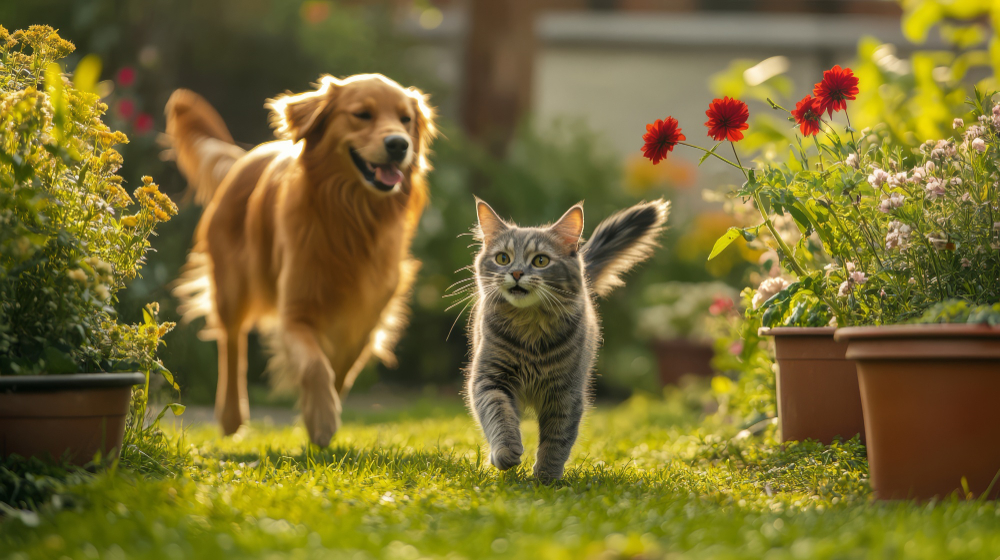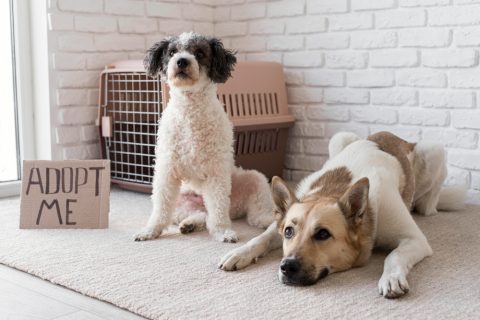Welcoming a new cat into a dog-friendly home can be a rewarding experience, but it requires a thoughtful and gradual introduction. While some dogs and cats hit it off instantly, many need time and positive reinforcement to coexist peacefully. Here’s a comprehensive guide to help you navigate this transition smoothly.
Contents
- Why Personality Matters More Than Species
- Step 1: Set Up a Sanctuary for Your Cat
- Step 2: Let Them Smell Each Other
- Step 3: Controlled Visual Introductions
- Step 4: Try the “Look at That” Training Method
- Step 5: Off-Leash Interaction with Safety Measures
- Step 6: Evaluate and Adjust
- Bonus Tips for a Peaceful Multi-Pet Household
- Looking Ahead
Why Personality Matters More Than Species
Contrary to popular belief, dogs and cats aren’t destined to be enemies. Many become the best of companions — but the success of their relationship hinges on individual temperament rather than species stereotypes.
If your dog has a strong prey drive, is easily excitable, or has never interacted with cats, the introduction will require extra caution. Similarly, confident cats usually handle new situations better than shy or skittish ones.
Step 1: Set Up a Sanctuary for Your Cat
Before the first sniff or stare, your new feline friend needs a safe, dog-free zone to adjust to the home.
- Choose a quiet room with a door (not your dog’s sleeping area).
- Provide food, water, a litter box, toys, scratching posts, and soft bedding.
- Use pet friendly furniture or cat trees to offer elevated hiding spots.
- Make sure your cat has time to acclimate — ideally a few days — before any introductions begin.
Tip: Use pet safe floor cleaner and pet odor eliminator to keep the sanctuary fresh and stress-free.
Step 2: Let Them Smell Each Other
Start the relationship with scent, not sight.
- Swap blankets or toys between your pets so they can sniff each other’s scent.
- Allow your dog to sniff under the door to the cat’s room and vice versa.
- Begin feeding them on opposite sides of the closed door to create positive associations.
This step is crucial. Scent introduces the other animal as part of the environment, not a threat.
Step 3: Controlled Visual Introductions
Once both animals are comfortable with each other’s scent, let them see one another in a safe and structuredenvironment:
- Use a tall baby gate or a sturdy barrier they can’t bypass.
- Keep the dog on a loose leash.
- Let the cat approach at her own pace. Never force interaction.
During these sessions, use positive reinforcement to reward calm behavior:
- Treats and praise when your dog looks at the cat and then looks away.
- Encouragement when the cat remains relaxed or explores confidently.
Travel tip: If you’re introducing pets in a new home or while relocating, finding pet friendly hotels in San Diego or similar destinations can help ease stress for everyone.
Step 4: Try the “Look at That” Training Method
If your dog becomes too focused on the cat — staring, whining, or tensing up — try the “Look at That” (LAT) technique.
- Let your dog look at the cat from a safe distance.
- When your dog notices the cat, say “yes!” (or click if using a clicker) and immediately give a treat.
- The goal is to teach your dog that seeing the cat means a reward — and eventually to look back at you automatically.
Repeat in short sessions. Over time, reduce the distance while monitoring your dog’s body language.
Learn more about this positive reinforcement technique from ASPCA’s behavior resource center.
Step 5: Off-Leash Interaction with Safety Measures
Once both pets are calmly coexisting during leashed sessions, you can allow supervised off-leash time indoors:
- Keep the dog’s leash on but dragging so you can intervene if needed.
- Never restrain the cat or force her into the room.
- Give the cat access to pet friendly couches or elevated areas to retreat.
Continue these sessions until they show mutual comfort and no signs of stress or aggression.
Reminder: Never leave them unsupervised in the early stages, even if things seem to be going well.
Step 6: Evaluate and Adjust
Some dog-cat duos become friends overnight, while others may take weeks or months. Every pet learns and adapts at their own pace.
- Look for body language cues: stiff posture, pinned ears, tail swishing, or intense staring are signs to slow down.
- If needed, go back a step and try again.
- If things aren’t progressing or worsen, consider consulting a certified dog trainer or animal behaviorist.
Bonus Tips for a Peaceful Multi-Pet Household
- Provide multiple litter boxes in dog-free areas.
- Install pet friendly pest control solutions for shared spaces.
- Make sure each pet has their own food and water bowls.
- Keep small breakable items off low tables — curious cats and wagging tails are a chaotic combo.
- Keep your home calm and structured to minimize stress.
And don’t forget: ensuring proper ID like microchips or HomeAgain pet recovery tags can be lifesavers in case a frightened pet bolts.
Looking Ahead
With time, training, and patience, your dog and cat can become peaceful roommates — or even best buddies. Celebrate small wins, stay consistent, and above all, be patient.
And when you’re ready for the reverse situation — bringing a new dog into a cat’s domain — be sure to read our companion guide: 👉 How to Introduce a Dog to Your Cat







